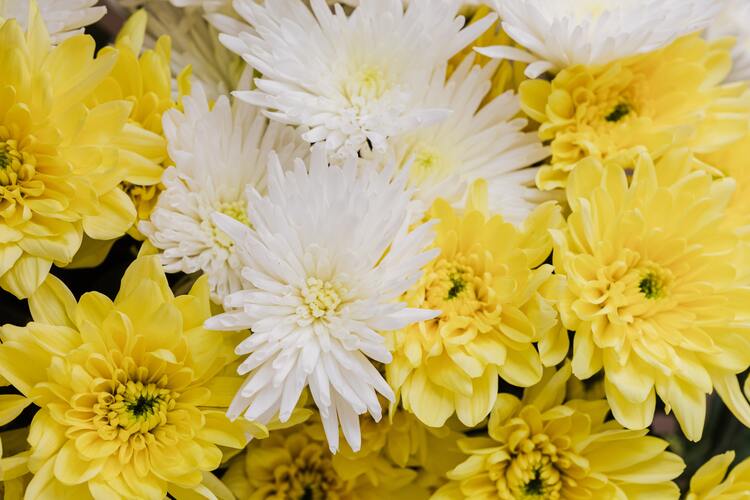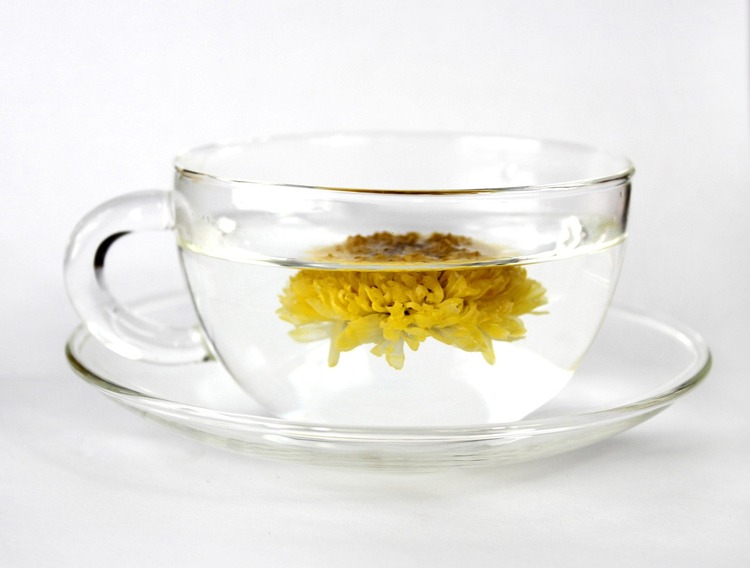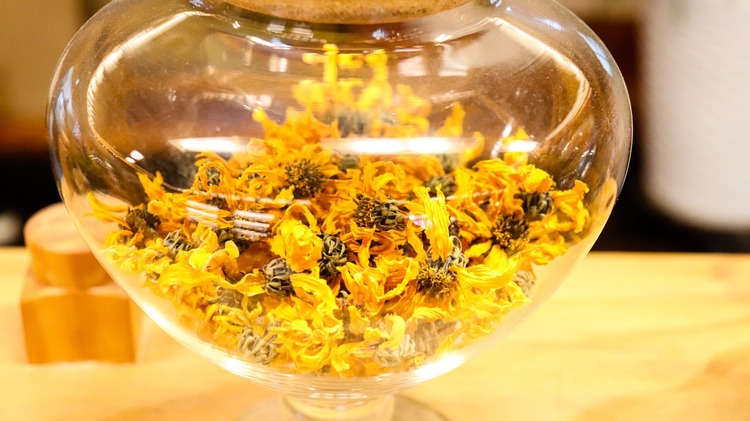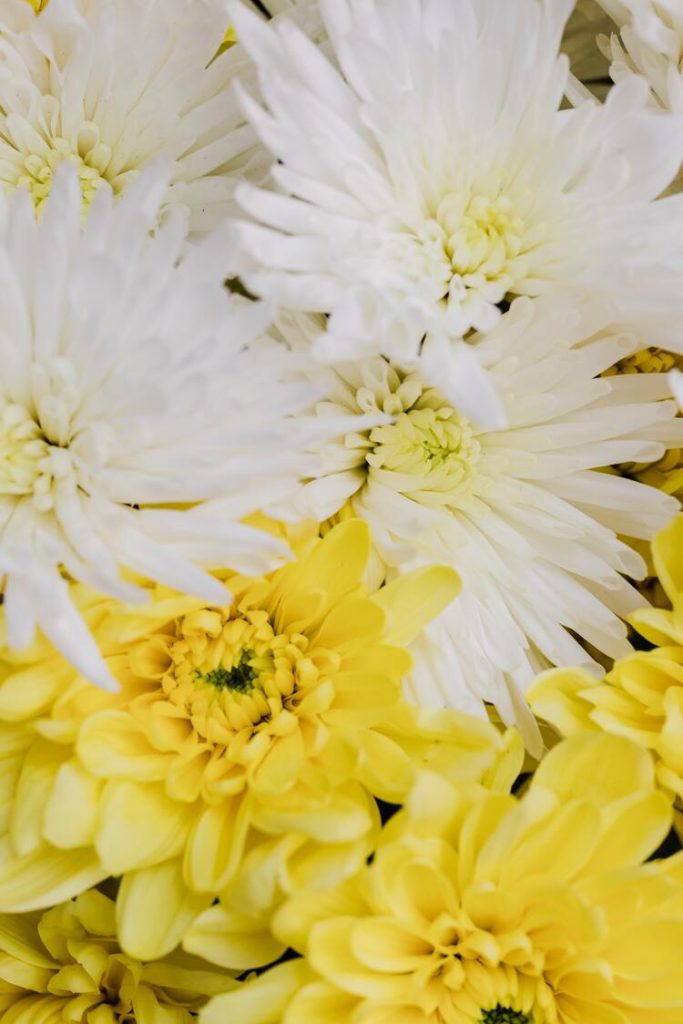Chrysanthemum green tea is a delightful beverage that combines two of nature’s most cherished gifts – chrysanthemum flowers and green tea leaves. As you sip on this aromatic concoction, you’ll enjoy its refreshing flavor and many health-promoting properties.
You might already be a fan of green tea, appreciated for its antioxidants and weight-management support. Adding chrysanthemum flowers to the mix introduces a new level of charm and benefits.
Chrysanthemum nourishes your eyes, soothing them after a long day of staring at screens or being outdoors. The mellow, floral essence of chrysanthemum perfectly complements the earthy tones of green tea, creating a harmonious blend that is as beautiful to look at as it is to taste.
Keep reading if you want to learn more about this exciting combination of ingredients!
Please note: This article contains affiliate links, meaning I may earn a commission if you make a purchase by clicking a link. Of course, this comes at no extra cost to you and helps me keep offering readers solid information.

Origins and Popularity in China
The origin of chrysanthemum green tea can be traced back to China, where green tea and chrysanthemum flowers have been consumed for centuries.
In China, chrysanthemum flowers are often associated with nobility and elegance. They have been used in traditional Chinese medicine, art, and poetry. Drinking chrysanthemum tea was considered a symbol of high status, primarily enjoyed by the nobles and the upper class. Gradually, its popularity spread among commoners too, as they started to appreciate its unique flavor and potential health benefits.
Green tea, on the other hand, has been a staple in Chinese culture for thousands of years and is renowned for its antioxidant properties and health benefits.
Combining green tea and chrysanthemum flowers in a single beverage offers a unique blend of flavors and potential health advantages.
The Chrysanthemum Plant
Chrysanthemums, often called “mums,” are flowering plants from the Asteraceae family. Their beautiful blooms come in various colors, making them popular for gardens and floral arrangements. The chrysanthemum plant is not only admired for its appearance but its leaves and flowers have been used in traditional medicine and as a culinary ingredient.
Chrysanthemum indicum, a specific variety of chrysanthemum, is particularly favored for its use in making chrysanthemum green tea. This herbaceous perennial originates from East Asia and has been cultivated for over 2,500 years. When the plant is in bloom, you’ll notice its stunning flowers, which come in yellow, white, and even purple shades.
The chrysanthemum plant thrives in well-drained soil and prefers a sunny location. When planting, it’s important to provide adequate space for growth, as these plants can reach heights of 1 to 3 feet. Regular pruning will encourage bushier growth and more blooms for a beautiful display.
If you grow and maintain your chrysanthemum plant, you can harvest the leaves and flowers for use in teas and dishes. Chrysanthemum green tea is made from the dried flowers of Chrysanthemum indicum, which are steeped along with green tea leaves.
This is a popular blend. Therefore, it is easy to purchase from a reputable brand.
Making Chrysanthemum Green Tea
Making chrysanthemum green tea with fresh or dried flowers is a simple process that results in a delightful and aromatic beverage. Here’s how you can prepare it:
Ingredients
- Fresh or dried chrysanthemum flowers
- Green tea leaves (loose leaf or tea bags)
- Boiling water
- Honey or sugar (optional, for sweetness)
- A teapot or teacup
- Tea strainer or infuser (if using loose-leaf green tea)
Instructions
- Prepare Chrysanthemum Flowers:
- If using fresh chrysanthemum flowers, you’ll need to rinse them gently to remove any dirt or impurities. You can use whole flowers or just the petals.
- If using dried chrysanthemum flowers, there’s no need for rinsing; they’re ready to use.
- Boil Water:
- Boil fresh, filtered water. For green tea, it’s generally recommended to use about 175-185°F (80-85°C) water. You can achieve this by letting the water cool for a few minutes after boiling.
- Warm the Teapot or Teacup:
- Pour a small amount of hot water into the teapot or teacup, swirling it around to warm the vessel. Discard the water.
- Add Chrysanthemum Flowers:
- Place the fresh or dried chrysanthemum flowers in the teapot or teacup. The quantity can vary depending on your taste, but a general guideline is 2-4 flowers per cup.
- Add Green Tea:
- Add one tea bag per cup if you’re using green tea bags. Add 1-2 teaspoons of green tea leaves per cup of loose-leaf green tea. You can adjust the quantity to suit your preference.
- Pour Hot Water:
- Carefully pour the hot water into the teapot or teacup directly over the chrysanthemum flowers and green tea leaves.
- Steep:
- Cover the teapot or teacup with a lid or saucer to trap the steam and aroma. Allow the tea to steep for about 2-3 minutes. Be careful not to over-steep, as green tea can become bitter if steeped too long.
- Strain and Serve:
- If you use loose-leaf green tea, use a tea strainer or infuser to strain the tea into your serving cup to remove the tea leaves and flowers. If you use tea bags, simply remove the tea bags.
- Optionally, add honey or sugar to sweeten the tea, if desired.
- Enjoy:
- Chrysanthemum Green Tea can be served hot or cold, depending on your preference. Enjoy the soothing and aromatic blend of flavors.

Taste and Varieties
There are a variety of chrysanthemum green teas for you to explore. Some popular types include:
- Hangzhou White Chrysanthemum Green Tea: A delicate and gently sweet tea that combines white chrysanthemum flowers with a light green tea base.
- Huangshan Tributary Chrysanthemum Green Tea: Another lovely combination, boasting a subtle sweetness and a rich flavor profile derived from the premium Huangshan green tea base.
You can enjoy these chrysanthemum green teas as they are or enhance their taste by incorporating a bit of sugar, honey, or rock sugar to your liking. Adding sugar, in moderation, can bring out the tea’s natural flavors and provide a smoother taste.
A touch of honey adds a delightful sweetness while complementing the floral notes of the chrysanthemum flowers. On the other hand, rock sugar adds a unique sweetness that can give the tea a rounder and fuller flavor.
Remember to experiment with different varieties and sweeteners to find your personal favorite. Doing so allows you to create the perfect cup of tea to suit your taste buds and enjoy a soothing and flavorful experience.
Nutritional Information
This tea gives you essential vitamins, minerals, and other nutrients. Chrysanthemum Green Tea is low in calories and contains almost no fat, making it a guilt-free addition to your daily routine. It’s also free of carbohydrates and provides minimal protein, ensuring that it won’t disrupt your dietary goals.
Here’s a brief rundown of the vitamins found in this tea:
- Vitamin A: Essential for good vision and strong immune function.
- Vitamin C: Contributes to collagen formation, helping maintain healthy skin, bones, and cartilage.
- Vitamin B-Complex: Boosts metabolism, brain function, and red blood cell production.
In addition to vitamins, chrysanthemum green tea packs in several vital minerals, including calcium, potassium, iron, and magnesium. Each of these minerals plays an important role in maintaining your overall well-being.
- Calcium: Vital for the development and maintenance of healthy teeth and bones.
- Potassium: Helps regulate blood pressure and supports proper muscle function.
- Iron: Necessary for red blood cell production and transporting oxygen throughout the body.
- Magnesium: Supports muscle and nerve function and steady heart rhythm.
Lastly, chrysanthemum green tea contains a small amount of dietary fiber. Although the fiber content isn’t as high as in other food items, it still maintains healthy digestion and provides a feeling of fullness.
Health Benefits of Chrysanthemum Green Tea
As a friendly reminder, sipping chrysanthemum green tea can offer numerous health benefits. For starters, its anti-inflammatory properties help to soothe your body, reduce inflammation, and alleviate discomfort due to arthritis or muscle aches.
Rich in antioxidants and essential oils, this tea protects your immune system against harmful bacteria and viruses. With each cup of tea, you’re helping your body fend off common infections and seasonal illnesses such as the flu.
Are you feeling feverish or dealing with a persistent headache? Chrysanthemum green tea can be a game-changer. Thanks to its natural antipyretic effects, it can help reduce fever and ease headaches, making you feel better quickly.
In addition to providing relief from fever and headaches, This tea can be beneficial for those with high blood pressure. Its anti-hypertensive properties help to regulate blood pressure, reducing your risk of complications such as heart disease and stroke.
Digestion issues or stress on your mind? This multitasking tea can aid your digestion and alleviate stress. With every sip, you can feel the soothing effects of Chrysanthemum tea, melting away anxiety and calming your upset stomach.

Other Uses of Chrysanthemum
Apart from enjoying chrysanthemum green tea as a delightful and soothing beverage, you can also explore its other uses.
Chrysanthemum Essential Oils: The pleasant aroma of Chrysanthemum essential oils can be found in many products like candles, perfumes, and other aromatherapy items. These oils are used to create a calming and comforting atmosphere.
As a Herbal Tea: Did you know that Chrysanthemum can also be enjoyed as a standalone herbal tea? By steeping dried flowers in hot water, you can create a caffeine-free drink to help soothe an irritated throat or relieve stress.
Edible Chrysanthemum Flowers and Stalks: You can incorporate Chrysanthemum flowers and stalks into your meals. Both the flowers and stalks can be blanched and eaten as a side dish, providing an extra boost of vitamins and minerals to your daily dietary intake.
Inclusion in Salads: Fresh chrysanthemum flowers add a vibrant touch to salads. Pluck the petals and mix them with your favorite salad ingredients to give your meal an appealing look and added nutritional value.
Buying Recommendations
If you are considering buying online, please take into consideration the following recommendations:
FullChea – Top Grade Chinese Chrysanthemum Tea

INCAS 100% USDA Organic Chrysanthemum Tea


FullChea – Longjing Tea – Dragonwell Tea – Chinese Green Tea Loose Leaf

Cha Wu-[B] BiLuoChun Green Tea

Numi Organic Tea Gunpowder Green

Frequently Asked Questions
How many chrysanthemum flowers should I use for tea?
For a standard cup of chrysanthemum green tea, using about 1-2 grams of dried chrysanthemum flowers is recommended. Feel free to adjust the quantity based on your taste preferences or the size of your teapot.
What is the process for drying chrysanthemum flowers for tea?
To dry chrysanthemum flowers for tea, follow these simple steps:
- Choose fresh, healthy chrysanthemum flowers.
- Remove the petals and rinse gently with water.
- Place the petals on a clean cloth or tray in a well-ventilated area, away from direct sunlight.
- Allow the petals to air-dry for 3-5 days, flipping them occasionally to ensure even drying.
- Store the dried petals in an airtight container for future use.
Can you make chrysanthemum tea from fresh flowers?
Yes, you can make chrysanthemum tea from fresh flowers. Here’s how:
- Select fresh, healthy chrysanthemum flowers and remove the petals.
- Gently rinse the petals with water.
- Place 5-6 fresh petals per cup of tea in a teapot.
- Add boiling water and let the tea steep for 3-5 minutes.
- Strain the tea and enjoy!
What are the benefits and side effects of chrysanthemum tea?
Chrysanthemum tea has numerous potential health benefits, including:
- Reducing inflammation
- Aiding digestion
- Supporting liver health
- Enhancing eye health
However, some possible side effects exist, particularly for those with daisies, marigolds, or ragweed allergies, as consuming chrysanthemum may trigger an allergic reaction. If you’re pregnant or breastfeeding, it’s best to consult your healthcare provider before consuming chrysanthemum tea.
Does chrysanthemum tea cause sleepiness?
Chrysanthemum tea has a calming effect on the body and may help with relaxation, making it an excellent beverage to consume before bedtime. While it doesn’t explicitly cause sleepiness, its soothing properties may promote a more restful sleep.
Is it safe to drink chrysanthemum tea daily?
Drinking chrysanthemum tea daily is generally safe for most people. However, paying attention to your body and any reactions you experience is essential. If you notice any adverse effects or have concerns about consuming chrysanthemum tea regularly, consult your healthcare provider for guidance.

I hope you have enjoyed the article!
Have you tried this tea?
More About Floral Teas
What Does Jasmine Tea Taste Like?
What Does Hibiscus Tea Taste Like?
What Does Rose Tea Taste Like?
What Does Rose Milk Tea Taste Like?
What Does Rosehip Tea Taste Like?
What Does Lavender Tea Taste Like?
What Does Lavender Milk Tea Taste Like?